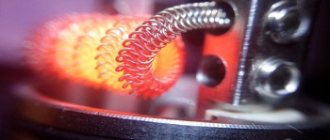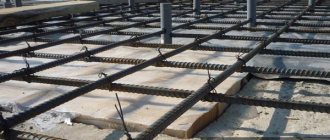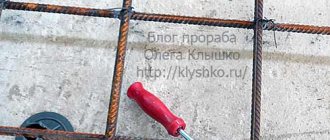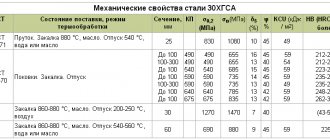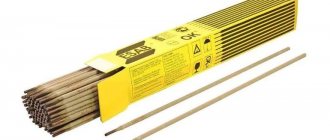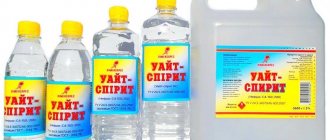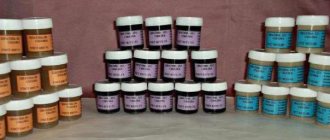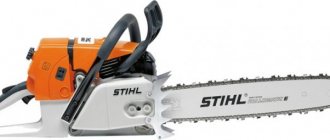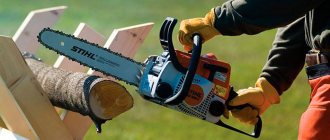In our country there will never be a shortage of “folk craftsmen”. Russian people have always been distinguished by their intelligence and ingenuity. Therefore, one of the questions that worries many inventors is where they can get nichrome wire in the required quantity. This material is a special alloy containing a high concentration of chemical elements such as chromium and nickel. In addition to them, nichrome also includes other metals - manganese, silicon, iron and aluminum, which have their own advantages, and their combination in one alloy creates a metal that has remarkable quality characteristics.
What is nichrome wire used for and where can I get or buy it?
Our country has never lacked “traditional craftsmen”.
Intelligence and ingenuity have always been the hallmarks of the Russian people. One of the questions that worries many modern “Kulibins” is where to get the required amount of nichrome wire? But first, let’s figure out why it attracts domestic “homemade” people so much? What kind of material is this? In fact, it is a special alloy with a high concentration of chemical elements such as nickel and chromium (hence the name of the wire). It can have a cross-section of various configurations (circle, trapezoid, square, oval) and diameter (from fractions of a “mm” to several “cm”).
Why is “nichrome” so valued?
Firstly, it does not rust, and corrosion, as is known, is the “sore spot” of most metals and alloys.
Secondly, wire made of this material is characterized by increased resistance to electric current. Consequently, in order to obtain the same amount of heat generated when connected to an electrical circuit, “nichrome” (in linear meters) will need several times less than, say, steel. Hence the reduction in the weight of the device (device) and the possibility of miniaturizing the design (reducing dimensions).
Thirdly, nichrome wire does not change its properties, does not deform, and does not “burn” at high temperatures.
Fourthly, it is elastic and can be given any shape.
Where is this wire used? To be honest, it’s impossible to list everything, especially when talking about production. Therefore, as an example, we note only a few options for its use in everyday life:
- foam cutting machines;
- devices for burning wood;
- heating systems for car windows and rearview mirrors;
- the simplest household heaters, better known as “goats”;
- kilns for firing (for independent production of ceramics);
- for heating certain types of metals (in home forges);
- homemade welding machines.
Where to get?
So we come to this rhetorical question. Let's consider all possible options.
Order . Now almost every more or less large settlement has a help desk for services and goods. The operator will tell you which organization is ready to sell “nichrome” and give contact numbers. Relevant information can also be found on the Internet.
But the chances of acquisition are slim. It is unlikely that anyone will undertake to supply material if we are talking about only one and a half to two meters of wire. Organizations, as a rule, engage only in wholesale sales. But it still makes sense to call and find out.
Buy . There are also options here.
- In another city (). But in this case you will have to pay extra for shipping.
- In specialized stores. They can be called differently - “Radio components”, “Skillful hands” and the like. In principle, you can find it. As a rule, all “private traders” selling spare parts (radio components) know each other well. Therefore, if someone does not have wire in stock, he can tell you where to buy it. The main thing is to find a “common language” with the Seller.
By the way, you can buy such wire at a regular hardware store. Spirals for electric stoves are made from the same “nichrome”.
- At the farmer's market. In every locality there are places where people sell whatever they want. Such “points” are called differently – “flea market”, “collapse”, “flea market”. You just need to take the time to walk around, look, and ask around. It all depends on how much “nichrome” is needed. This is probably the most promising search path, especially if you need little material.
Moreover, it is not necessary to look for wire rolled into a coil. You can also purchase some old device. For example, a laboratory rheostat, known to everyone from physics lessons. In itself, it may not be of value to us, but a certain amount of “nichrome” of a certain cross-section is wound on it.
Conclusion
You can buy or otherwise obtain nichrome wire. You just need to take the initiative and try all the above methods.
How to make a machine with a nichrome string for cutting foam plastic with your own hands
Craftsmen, inventors and innovators have never been translated into our country. Many of these enthusiastic people would like to know where nichrome wire is sold, where to get this material at home? Why is it attractive to modern Kulibins and home-grown homemade ones? Nichrome wire is used for the manufacture of cutters, jigsaws, soldering irons, machines for cutting foam plastic, polystyrene, etc. The material is also widely used in industrial production.
What is nichrome and what is its value?
Nichrome is a special alloy with a high concentration of chromium and nickel. The composition also includes iron, aluminum, silicon, manganese and other chemical elements, the combination of which gives the metal unique characteristics.
Properties of Nickel-Chromium Alloy
The most common nichrome-based alloys are ferronichrome and ferrochromal (fechral). Wire is obtained from them by drawing. The quality of its production is regulated by current state industry standards. GOST 8803-89 and 12766 apply to wire with good electrical resistance. Chrome gives the metal hardness and strength, and nickel gives it ductility. The maximum heating temperature is affected by the percentage of nickel content in the alloy. The more it is, the higher the temperature, which can reach 1000-1300 degrees.
The value of the alloy and products made from it
Products made from an alloy of nickel and chromium have increased resistance to electric current. This means that to obtain the same amount of heat generated, much less nichrome will be needed than other metal. Thanks to this, the weight and dimensions of the devices and devices in which it is used are reduced.
High resistance is ensured by numerous parameters, the main of which is the grade of raw materials used for manufacturing, as well as thickness. The thicker it is, the lower the resistance, which determines the level of heating. The metal does not burn, does not deform, and does not lose its characteristics when exposed to high temperatures.
The useful properties of the alloy include plasticity, which allows you to give the wire the desired shape. The cross-section can be in the form of a circle, oval, square and trapezoid, with a diameter of 0.1 to 1 mm. The value of the alloy is also that, unlike most metals that are susceptible to corrosion, it does not rust, as it has anti-corrosion resistance to aggressive liquid and gaseous media.
Advantages of chromium-nickel alloy products
The main advantages of nichrome wire, thanks to which it has become widespread in many areas of production, are in demand among inventors and home craftsmen:
- high heat resistance;
- anti-corrosion resistance;
- hardness, strength and mechanical stability;
- elasticity;
- high level of electrical resistivity;
- light weight;
- resistance to aggressive substances.
The only drawback of wire made from an alloy of nickel and chromium is its high cost, which does not in any way affect demand.
Refractory Tungsten Production Process
This material is classified as a rare metal.
It is characterized by relatively small volumes of consumption and production, as well as low prevalence in the earth’s crust. None of the rare metals are obtained by recovery from raw materials. Initially, it is processed into a chemical compound. And any rare metal ore undergoes additional enrichment before processing. There are three main stages for obtaining rare metal:
- Ore decomposition. The recovered metal is separated from the bulk of the processed raw materials. It concentrates in a precipitate or solution.
- Obtaining a pure chemical compound. Its isolation and purification.
- The metal is isolated from the resulting compound. This is how pure materials without impurities are obtained.
There are also several stages in the process of obtaining tungsten. The starting materials are scheelite and wolframite. Typically they contain from 0.2 to 2% tungsten.
- Ore beneficiation is carried out using electrostatic or magnetic separation, flotation, and gravity. As a result, a tungsten concentrate is obtained, which contains approximately 55–65% tungsten anhydride. The presence of impurities in them is also controlled: bismuth, antimony, copper, tin, arsenic, sulfur, phosphorus.
- Preparation of tungsten anhydride. It is the raw material for the production of metal tungsten or its carbide. To achieve this, a number of procedures are carried out, such as: leaching of cake and alloy, decomposition of concentrates, production of technical tungsten acid and others. As a result of these actions, a product should be obtained that will contain 99.9% tungsten trioxide.
- Obtaining powder. In powder form, pure metal can be obtained from anhydride. This is achieved by reduction with carbon or hydrogen. Carbon reduction is carried out less frequently because the anhydride is saturated with carbides and this leads to brittleness of the metal and poor processing. When obtaining powder, special methods are used that make it possible to control the shape and size of grains, granulometric and chemical compositions.
- Production of compact tungsten. Basically, it is in the form of ingots or bars and is a blank for the manufacture of semi-finished products: tape, rods, wire and others.
Where to get nichrome wire
The product is sold in rolls (reels, coils) or in the form of tape. Where to buy or get nichrome products? Let's consider all possible options:
- Order from the organization that manufactures the product. You can find out the addresses of such enterprises in information desks on services and goods that are available in large populated areas. The operator will tell you where to buy and give you phone numbers. Information about manufacturers can be found on the Internet.
- Purchase from a specialty store. This could be a store that sells radio components, materials for designers and craftsmen like “Skillful Hands,” etc.
- Buy from private traders selling spare parts, radio components and other small metal items.
- In a regular hardware store.
- At a flea market or flea market in some old device. For example, in the laboratory rheostat known from physics lessons.
- You can find nichrome wire at home. The spiral of the electric stove is made from it.
Scope of application in industry and at home
Nichrome products are used in places that require high-quality metal. Particularly in demand in industrial production.
In industrial production
Metal products occupy one of the first places in the market of industrial and household electrical equipment. It has found wide application in industrial sectors using electric heating furnaces, roasting and drying furnaces, furnaces heated to high temperatures, and devices with thermal effects. It is used in welding machines, household heaters and heating systems for car windows and rear-view mirrors, in resistors, resistance units and rheostats as a heating or resistor element. As noted above, the material is widely used among home craftsmen.
Note! Selecting nichrome wire for making equipment is not easy. When choosing, it is necessary to take into account such parameters as diameter, length and alloy grade.
In the household
In the domestic sphere it is used for cutting foam and polystyrene. Cutting these materials at home is quite problematic. There are several ways. Often a knife is used for these purposes, from which the material begins to crumble.
Home craftsmen know how to cut polystyrene foam at home so that it does not crumble. For this you will need nichrome wire. It is needed in order to make a machine whose cutting tool is a heated string. With its help, you can cut foam plastic and make products from it with your own hands.
How to make a foam cutter with your own hands
Making a machine is not difficult. To do this you will need:
- a step-down transformer;
- lining made of pipe (pipe at least 20 mm thick, foam thickness at least 2 cm);
- springs for string tension;
- metal string.
To make a tabletop you will need a table, a board and a sheet of corrugated sheeting.
You can make a step-down transformer yourself from transformer iron. You will need to make a rheostat to select the current value. To do this, you can take a spiral from an electric stove, first stretching it into a string. The winding frame is constructed from an asbestos-cement or ceramic pipe 15-20 mm thick and about 80 mm long.
For shaped cutting, a thermal cutter made from a piece of nichrome wire is used. It is secured to a handle made of insulating material. A homemade cutter for foam plastic copes well with the task, including shaped cutting of material. The device allows you to make indentations, cut out cavities, and work with foam plastic the way a sculptor works with clay.
Note! After treatment, the surface is covered with a melted crust, which closes the pores and increases the strength of the foam.
With the help of homemade devices in which nichrome wire is used, you can not only cut foam plastic, but also burn wood. It can also be used in homemade household heaters, welding machines, and heating systems for car windows and rear-view mirrors.
Soldering Features
The features of nichrome soldering are as follows:
- Use of tin-lead materials POS 50 and POS 1 for solder.
- Careful preparation of flux.
- Proper processing of the working surface.
Before soldering, the working surface is cleaned with sandpaper and treated with cotton wool soaked in an alcohol solution of copper chloride. Next, apply flux and begin the process.
IMPORTANT . Flux is prepared by mixing several elements: 100 g of technical petroleum jelly, 5 g of glycerin and 7 g of zinc chloride powder.
When tinning nichrome with copper leads, it is better to use 2-3 g of citric acid. This is enough to service one wire. To remove acid, the wire must be placed on rosin, dipped, and a soldering iron is used for further work.
Currently, nichrome and products made from it are used almost everywhere. Neither exposure to an aggressive industrial environment, nor high temperatures, nor heavy loads during work can defeat such a resistant material.
Characteristics of nichrome and its application
The alloy consists of 50−80% nickel and 15−24% chromium with a small amount of additives in the form of aluminum, manganese and chromium. Alloying with rare earth components is possible to increase service life.
Cr20Ni80 is the most common type of material, and wire made from this alloy is the most popular. In second place are stripe and ribbon, and the least popular is the leaf shape.
Depending on the grade of the alloy, it has the following physical characteristics:
- Melting point 1100 - 1400 °C, operating temperature 800−1100 °C.
- Specific resistance depending on the alloy = 1.05−1.4 Ohmxmm²/meter.
- Thermal conductivity coefficient = 11.3W/(mxK)
Nichrome has a number of advantages over wires made of other alloys:
- No corrosion. Nichrome does not rust, unlike Kanthal alloy, which allows you to use it much longer.
- Nichrome thread has lower resistivity and thermal conductivity than kanthal. This allows you to get the required power using less wire, but sometimes this is a disadvantage.
- Does not change its physical properties when exposed to high temperatures.
- Nichrome is durable and hard. However, before burning it is springy, which can be a disadvantage in some situations.
- Good ductility, which allows for such types of mechanical processing as welding, sharpening, stamping.
- Has high heat resistance.
- The amount by which the resistance of nichrome changes with increasing temperature can be neglected
Nichrome is used in most devices, such as:
- Devices for cutting foam plastic.
- Glass heating systems.
- In muffle furnaces for melting metals.
- In hair dryers, irons, heaters.
- In vaporizers for electronic cigarettes.
- In devices for wood burning.
- Furnaces for drying and firing.
- In parts operating at high temperatures
As you can see, nichrome has good physical properties and is not subject to corrosion, which extends its service life compared to other types of similar materials used for the same purposes. The scope of its use in everyday life is also vast, so the question is often asked - where can you get nichrome thread. Most common options for obtaining nichrome will be listed below.
Usage
The VM brand is used in X-ray technology and radio electronics, for the manufacture of heaters and cathodes for electronic devices, which are designed for operation under conditions of vibration, shock, t° 2100 °C. The VRN brand is used for the manufacture of springs, hooks, cathodes of gas-discharge and electronic devices, bushings, traverses and other parts that do not require tungsten with special additives.
High resistance and unique light output allow the use of thin tungsten filament in incandescent lamps. Tungsten filament for lighting devices is made in accordance with GOST 19 671−91 from VA, VRN, HF, ∅ 19.5 µm - 1.5 mm. It is also used to make springs for electronic devices, spiral and non-spiral (loop) cathodes for electronic devices, grids, and heaters. Various filters and tungsten wire meshes are used in the chemical industry. This wire is used for the production of surgical instruments, parts of rockets, aircraft, and textile equipment.
TUNGSTEN WIRE (GOST 18 903−73)
| Tungsten wire grade | Surface condition | Group | Ø, µm | Application |
| VA | Black | A | 10 — 1500 | Spiral heaters and cathodes for electronic devices and springs for semiconductor devices. Spiral lamps. |
| VA | Black advanced technology | HELL | 50 — 1500 | Cathodes and heaters, directly heated cathodes in spiral structures with core factor 1 - 2.2 |
| VA | Black, high heat resistance | AE | 500 — 1200 | Spiral directly heated heaters and cathodes with operating temperatures or heat treatment temperatures above 2000°C |
| VA | Black | AP | 10 — 200 | Non-spiral cathodes, grids, springs, loop heaters for electronic devices. |
| VA | Purified | B | 11 — 500 | Hooks, supports, spirals of incandescent lamps, springs, spiral cathodes and heaters for gas-discharge and electronic devices. |
| VA | Cleaned and annealed | G | 11 — 500 | Grids, loop heaters, non-spiral cathodes. Spirals for some special incandescent lamps |
| VA | Etched | T | 5 — 12 | Directly heated non-spiral and spiral cathodes and cathode heaters. Networks of electronic devices. |
| VA | Etched and annealed | THAT | 5 — 12 | Directly heated non-spiral and spiral cathodes and cathode heaters. Networks of electronic devices. |
| VM | Black | 11 — 1500 | Parts of devices and spirals of special incandescent lamps, which are operated at temperatures not exceeding 2100 °C under high mechanical loads (vibrations, shocks) | |
| VRN | Black | 800 — 1500 | Traverses, bushings and other parts that do not require alloyed tungsten. | |
| VT-7 | Black | A | 20 — 1500 | Cathodes, hooks, springs of some gas-discharge and electronic devices |
| VT-10 | Black | 25 — 1500 | Cathodes of gas-discharge and electronic devices | |
| VT-15 | Black | 150 — 1500 | Cathodes of gas-discharge and electronic devices |
Provider
offers to buy tungsten wire, thread, the price is the best today. We always have a large selection of high quality products in stock. Compliance with GOST and international quality standards. Availability of goods and prompt delivery are ensured by representative offices located in Moscow, St. Petersburg, and cities of Eastern Europe. Tungsten wire and thread are always available, the price depends on the order volume and additional delivery conditions. Preferential discounts are provided for bulk purchases.
Examples of where you can get nichrome alloy
There are several ways to get nichrome. Each of them differs in the ease of obtaining and the quality of the material, but it is worth considering all possible options.
Ordering material
Nichrome, kanthal, nickel, and wire of some other alloys are sold in wholesale stores. The assortment provided by wholesalers is very large; you can order wire of any desired alloy of any cross-section and thickness. Relevant information about available stores can be found by calling the city's information service, or using an Internet search.
Even if the customer lives in a remote locality where the supplier’s organization is not located, you can request delivery, choosing the most convenient of the proposed options.
The caveat is that you will have to pay a considerable amount for delivery, and intermediaries send orders in large quantities and are unlikely to agree to supply a couple of meters of material.
But if you need a large batch of goods, then this is an ideal option. This is due to the fact that the wholesale price of a meter of wire is almost zero.
Shopping in stores
Probably the most adequate option of all possible for those who require high-quality wire of a certain cross-section, especially when only a few meters of material are required.
Purchasing also has its options:
Main sources of scrap
The paradox of this rare metal is that it can be found even in an ordinary residential building.
It is found in incandescent light bulbs and in the windings of electric furnaces. These are the main sources of tungsten for ordinary citizens and individuals.
However, it is very, very difficult to accumulate a sufficient amount to sell this non-ferrous metal from these sources.
Therefore, those who want to make a profit from several dozen light bulbs usually turn to resellers.
Tungsten is also contained in pobedite tips of concrete drills, which are also found in everyday life. It contains more of the main element, but it is not pure metal, but one of its alloys - “pobedit” or VK with cobalt.
Recyclable materials are sold by state and private enterprises that specialize in metal processing. They accept used tools made from high-speed steels:
- incisors;
- cutters;
- borax;
- cutting discs and so on.
Do not forget that tungsten is common in the form of a finished product:
- wires;
- rods;
- circles;
- headquarters.
And also in the form of production waste:
- various scraps;
- shavings;
- dust;
- powder.
Self extraction
In household heating devices, a nichrome thread is responsible for heating. Where can I get wire at home, other than from them? This method is not ideal, because the cross-section and length of nichrome involved in each individual device are not known in advance.
But in case of serious need, you can resort to it. Below are examples of things from which nichrome can be obtained.
Nichrome from a soldering iron
In this case, the nichrome thread heats the soldering iron tip. In order to get the wire, you need to disassemble the tool body. As a rule, it uses very thin nichrome. It is important to know that you need a soldering iron with a copper tip, since a ceramic one has a completely different heating element.
Hair dryer
You can get nichrome from a hair dryer, no matter a hair dryer or one used for drying hair. The heating power in it is higher than in a soldering iron; therefore, there will be more wire, and, as a rule, it has a thicker cross-section. To obtain nichrome, simply disassemble the device and remove the spiral-wound wire.
In addition to hair dryers, there are electric room heaters of the same operating principle, they contain nichrome with an even larger cross-section.
Electric stoves, kettles and boilers
Probably the most difficult process of obtaining wire of all those listed. The wire in these devices is located inside the heating element - a tubular electric heating element.
In order to remove it, it is necessary to disconnect the heating element from the device body. It can be powered directly from the mains, so in some cases the wires are cut.
As a rule, the heating element is a spiral, therefore, for more convenient removal, and also so as not to tear the nichrome wire, the spiral should be bent to the state of a straight tube.
The cavity of the heating element pipe, in which the desired spiral is located, is filled with bulk insulating material, which may look like white sand or gypsum. Under high pressure, this substance is pressed into a monolithic state, so to remove the nichrome thread, you must first remove all the insulating material.
The easiest way to do this is to crumble part of it on one side of the tube, and then lightly tap the insulating material with a hammer. This is a very long and tedious process, after which the required nichrome thread is easily removed from the tube.
A simple way to determine the type of wire
Sometimes manufacturers use kanthal instead of nichrome in their devices. When removing material from tools, it is advisable to be able to distinguish between the two alloys. It's not as difficult as it might seem. The fact is that kanthal contains iron (hence the susceptibility of kanthal threads to corrosion), so it is highly magnetic. Therefore, in order to determine the type of alloy, it is enough to bring a magnet to the wire - nichrome will not react to it.
Nichrome thread is most common in heating elements due to its low cost and good physical properties. Its use in everyday life is found in the role of heating elements for hair dryers, soldering irons, kettles, electric stoves and many other appliances. Due to their high heat resistance, nichrome materials are used at elevated temperatures. In addition, nichrome, along with other alloys, is used in evaporators for electronic cigarettes.
The prevalence of wire often raises the question of where to get nichrome wire. You can take it at home by disassembling an unnecessary device, but the best option would be to purchase the material in a store. In this case, you can be sure of the good composition of the product.
If necessary, nichrome can be replaced with another type of wire , the main thing is to determine its physical properties.
It should be remembered that depending on the composition of the alloy, the physical properties may differ, so it is necessary to clarify the requirements for the material when this is of high importance.
Conditions for receiving tungsten
It is important to note that different companies have different approaches to accepting recyclable materials. However, despite this, there are a number of general rules that enterprises of all types try to adhere to.
Both individuals and legal entities have the right to hand over tungsten scrap when registering scrap metal at the enterprise. When receiving it, an analysis is carried out and the exact content of pure metal and impurities is determined. This procedure is carried out using special instruments - metal and alloy analyzers.
The final price may vary depending on the composition of the tungsten alloy and the presence of various additives in it.
However, the cost in any case remains very high, since rare non-ferrous metals are used as impurities.
Recyclable materials with varying contents of the main element from 5 to 99% are accepted.
Large enterprises that provide secure and documented transactions place increased demands on the quality of scrap and on individuals or legal entities handing over the metal, namely:
- Acceptance of scrap is carried out in accordance with state standards, and the transaction must not contradict regulations.
- Metal can be accepted from an individual only upon presentation of an identification document.
- Recyclable materials are accepted only in their pure form without any dirt or impurities.
It is important to understand that many companies that accept tungsten scrap set a minimum weight of one kilogram, while large ones set it at 50 or more. Of course, it is possible to find small buyers through advertisements, but the price may be much lower
Making nichrome wire
Nichrome is an alloy of two metals: nickel and chromium. Supplemented with additives: iron, aluminum, phosphorus and sulfur to achieve the required quality. There are different brands depending on the ingredients.
Wire is produced from alloys based on nichrome, ferronichrome and fechral by drawing under pressure. The drawing technology takes place without additional heating of the workpieces. In order for the wire to be soft, it is fired in thermal ovens and cooled naturally. Quality regulations are established by GOSTs. Chrome gives strength and hardness, nickel gives ductility. The temperature depends on the amount of nickel in the alloy . Maximum temperature 1300 degrees .
In the industrial sector, two brands are more commonly used:
Х20Н80 and Х15Н60;
X20H80 - X - chromium, 20 - the presence of chromium as a percentage; N - nickel, 80 percent nickel content.
This material is used in the manufacture of electric heating and resistive elements and industrial electric heating devices, in laboratories, furnaces, household products, and thermal apparatus.
High resistance to electric current makes it possible to reduce the weight and size of electric heaters. The thicker the wire, the greater the heat transfer. When heated to maximum temperature, the metal remains unchanged and does not lose its qualities. The alloy is resistant to corrosion and rust; resistant to aggressive environments.
Advantages of nichrome
The main advantages include:
- high electrical resistance;
- high heat resistance and heat resistance;
- excellent mechanical properties;
- plasticity and weldability, allows easy processing of the product;
- resistance to deformation under high pressure at temperatures above 400 °C;
- refers to non-magnetic materials.
Disadvantages of the material
In addition to its advantages , metal also has its disadvantages:
- high price;
- The heating temperature is insufficient; in other alloys it is much higher.
Stamps
Nichrome is a heat-resistant alloy, has high electrical resistance, a low temperature coefficient of resistance, and significant corrosion resistance to air or other gaseous media at high temperatures. It also has satisfactory manufacturability (cold ductility, weldability) - nichrome wire, thread, tape, strip, rods and other semi-finished products can be obtained from this material; sufficient heat resistance - the ability to withstand mechanical loads without significant deformation, without collapsing at high temperatures. Oxides that are stable at high temperatures are formed on the surface of these alloys. The oxide film has a high density. These two factors ensure the high heat resistance of this precision material.
The most widely used brands are X20H80 and X15H60. Nichrome Х20Н80-Н, Х20Н80-VI, Х15Н60-Н, Х15Н60-VI are also used. The marking of these alloys is deciphered as follows: the letter denotes a chemical element, the number following it is the average mass fraction of this element in the alloy. For example, nichrome X20N80 contains 20-23% chromium (Cr) and about 80% nickel (Ni), X15N60 - 15-18% chromium (Cr) and about 60% nickel (Ni). The letters VI at the end of the brand indicate that this material was manufactured in a special way, namely, using vacuum induction melting. The letter H at the end of the brand indicates that the composition includes zirconium, which increases the reliability of the heater made of nichrome by increasing resistance at maximum operating temperature.
The chemical composition of grades Х20Н80, Х20Н80-Н, Х20Н80-VI and Х15Н60, Х15Н60-Н, Х15Н60-VI is regulated by the GOST standard 10994-74.
Purchase and selection
They sell finished products with various windings. The thread is made in the form of wire, tape, foil.
To purchase wire, you can place an order at the department for the production of rolled metal products. All you have to do is check your phone number and call. The Internet will provide all available information. Let's consider other options for purchasing wire:
- stores specializing in heating elements;
- shops selling household goods;
- On the market;
- in your house from old electric heating devices.
Where can I get nichrome wire?
You are a young and ambitious vaper. You now have an electronic cigarette that allows you to install your own coils and vape on them. You've learned how to wind very cool coils, but here's the problem. When you want to make a nichrome spiral, if your thermal control on nichrome works perfectly, you may be misled by the price question for this material.
And if you don’t want to spend a lot of money on this wire, then the question arises - where to get nichrome wire so as not to buy it in the store? Let's try to help all novice vapers in this difficult matter.
Why nichrome
Most often, the creators of coils are faced with the question, what is better for winding kanthal or nichrome? Both of these materials are widely used for making windings. But when it came to which one was better, the pros were divided on this matter. Each has its pros and cons.
If we collect objective information, we get the following:
- Nichrome is an alloy of nickel and chromium, with possible small admixtures of other metals. A wire made of such material will be quite soft and flexible. This wire will not turn black quickly.
- Kanthal is an alloy of iron, aluminum and chromium. If you come across the name fechral, then you should know that we are talking about the same material. Such wire, which does not contain nickel, is springy and does not have such a long service life. This material is cheaper than nichrome.
So how do you choose which one is better?
Choosing between nichrome and kanthal
As with everything related to e-cigarettes, there is no better one. Various characteristics are well suited for some purposes and completely unsuitable for others. It's the same story with wire.
Let's look at the characteristics of nichrome:
- nichrome, compared to kanthal, has lower resistivity;
- on nichrome wire, the box mod can produce more power;
- nichrome does not contain iron. Such winding will not rust, which means it will last much longer;
- nichrome conducts heat very well. A spiral made of this metal will heat up faster and cool down faster.
The advantages of nichrome over kanthal are obvious, which means it’s time to ask the question where to find such wire.
Temperature coefficient of resistance
The resistivity of an alloy changes when the material is heated or cooled.
The temperature coefficient of resistance (TCR) of nichrome is defined as the ratio of the change in electrical resistance to the change in temperature in degrees Kelvin, taken to the minus of the first power (Kˉ¹).
TKS of nichrome is determined by the formula: α= (R1 - R2) / R1 X (T1 - T2), where:
- R1 is the resistance value at the initial temperature;
- R2 - at final temperature;
- T1—initial temperature;
- T2—changed temperature;
- (R1 - R2) - difference in electrical resistance;
- (T1 - T2) - temperature difference.
Heating by 100°C increases the electrical resistance of nichrome by 2%.
In search of nichrome
It goes without saying that nichrome thread can be bought in stores that sell a variety of vaping accessories. It goes without saying that a meter of such wire can be quite expensive. And if you are just starting a career as a coil maker, then you will need more than 1 m of blank.
If this method is not affordable for you, then you can try looking for nichrome thread on radio markets. In the vastness of our homeland, they still exist, but it is not at all a fact that you will be able to find it there. But the same radio market can help us with this issue, you just need to know where to look
The solution to the situation may be a soldering iron, which you can find on the radio market, or you may find a non-working device in the closet or garage. If you still haven’t been able to find a soldering iron, you can buy one.
There is a certain chain of stores called Fix Price. There all goods are sold at a fixed price. And a soldering iron of the highest quality from China will cost you only 1 US dollar.
Next we perform the following manipulations:
- You need to disassemble the soldering iron and find that same nichrome thread. The thread inside our soldering iron actually turned out to be nichrome and it was very thin.
- To find out the cross-section of your wire, you need to take a pencil and wind 10 turns of thread around it. By pressing 10 turns of thread tightly together, we can quite accurately determine the cross-section of the wire.
In our case, 10 turns occupy 1 millimeter, which tells us that the cross-section of our thread is 0.1 mm.
The nichrome wire, which you can remove from a soldering iron at home for later use in winding a coil for electronic cigarettes, has certain dimensions. The winding from the soldering iron that we managed to get this way is very cheap, as we found out.
You can buy as many of these cheap soldering irons as you like, but, as we learned experimentally, the nichrome spiral in such devices sometimes differs in length. Disassembling a household soldering iron to obtain nichrome - working diagram. But what to do if there is no soldering iron?
A similar coil can be found in an old hair dryer. Hairdryers of different models contain nichrome spirals of different diameters, but this material is definitely there. The next place where you can get nichrome is a heater, which is built on the principle of a fan, although this method will be a little more expensive. And the most difficult way to get this metal would be to extract it from an electric stove with an open spiral.
Single hook lures
Tungsten wire is very stiff and requires very strong finger pressure to place it neatly on the hook. And the force is such that a single hook, even made of relatively thick wire - about 0.65 mm - simply breaks on the second or third turn, or uneven turns are obtained. Therefore, it is better to abandon 0.5 mm wire and switch to 0.3 mm.
With it, it turns out much easier, but not elementary, the wire is very springy, so all winding has to be done under tension, constantly squeezing with your fingers and not allowing it to unwind, so that the diameter of the winding does not increase. At the same time, in order to avoid kinks, the wire cannot be held rigidly; it must unwind around its center. For this reason, it will not be possible to wind wire onto a workpiece from a common reel.
You need to estimate the length of the piece needed for two layers and cut it from the reel with some margin. Particular precision cannot be achieved in this process; it is inconvenient to work with a short end, so you will have to put up with the fact that somewhere around 10-15, if not more, percent of the wire will go to waste. But the resulting products are quite aesthetically pleasing (photo 29). And with a relatively small size, they have good mass, which allows them to be used even in windy conditions.
We also make jigs on hooks Nos. 10 and 12 for fly fishing flies; the hooks themselves, depending on the size and model, are made of wire from 0.45 to 0.65 mm. If there are no problems when winding on thicker hooks, then you need to work very carefully with thin ones, and you get two layers of wire (photo 30). Depending on the size of the hook, you can make a jig from three layers of wire. We wind the third layer separately, on the jig in a screwdriver. And then, we fix everything with Moment-gel glue or Norpol-type polyester resin with the addition of dye.
To prevent the first layer of winding from dangling or rotating on the fore-end, you need to do the following. Saikyo hooks have a bent eye and we place the first layer of winding on the already bent part of the hook (photo 31), and from there we begin laying the second layer, we get a kind of lock. The coil does not rotate and cannot move anywhere, even when you apply significant force to the body of the jig when releasing it from the perch’s mouth.
It is recommended to bend the resulting body a little to bring the shape closer to the “Banana” shape. When testing both options: in the form of a nail and bends, no significant changes were noticed in the perch’s reaction to them. He willingly eats both. The main thing is to get into the theme with the color of the beads.
Not everything is as difficult as it seemed
Today you learned that winding from nichrome is not such an expensive undertaking. If you decide to disassemble the soldering iron, you will have 2.5 meters of wire in front of you. From such an amount of metal you will not get even 1 winding.
You were winding up your coil, and then a thought came to you - who told you that the metal you took out was actually nichrome? How to distinguish it from other metals and how to determine whether it is it? There is one simple and reliable way.
You will need to take a regular magnet and use it to test your wire. For comparison, kanthal will instantly be attracted to a magnet, and the metal you were looking for will not care at all about the magnetic field. Good luck with your experiments.
And in the comments we would ask you to share your personal experience. How and where did you get your nichrome wire?
conclusions
The collection of scrap non-ferrous metals is gaining popularity, because metal recyclables have been valued at all times. According to people who have been collecting for several years, such an activity is addictive and captivating, and digging for non-ferrous metals becomes an original hobby for many.
In order to maximize the benefits from digging and delivering scrap non-ferrous metals, you need appropriate equipment (metal detector, magnet) and knowledge of the properties of non-ferrous metal, plus the desire and desire to earn money.
Learn more about how to search for non-ferrous metals in this video:
